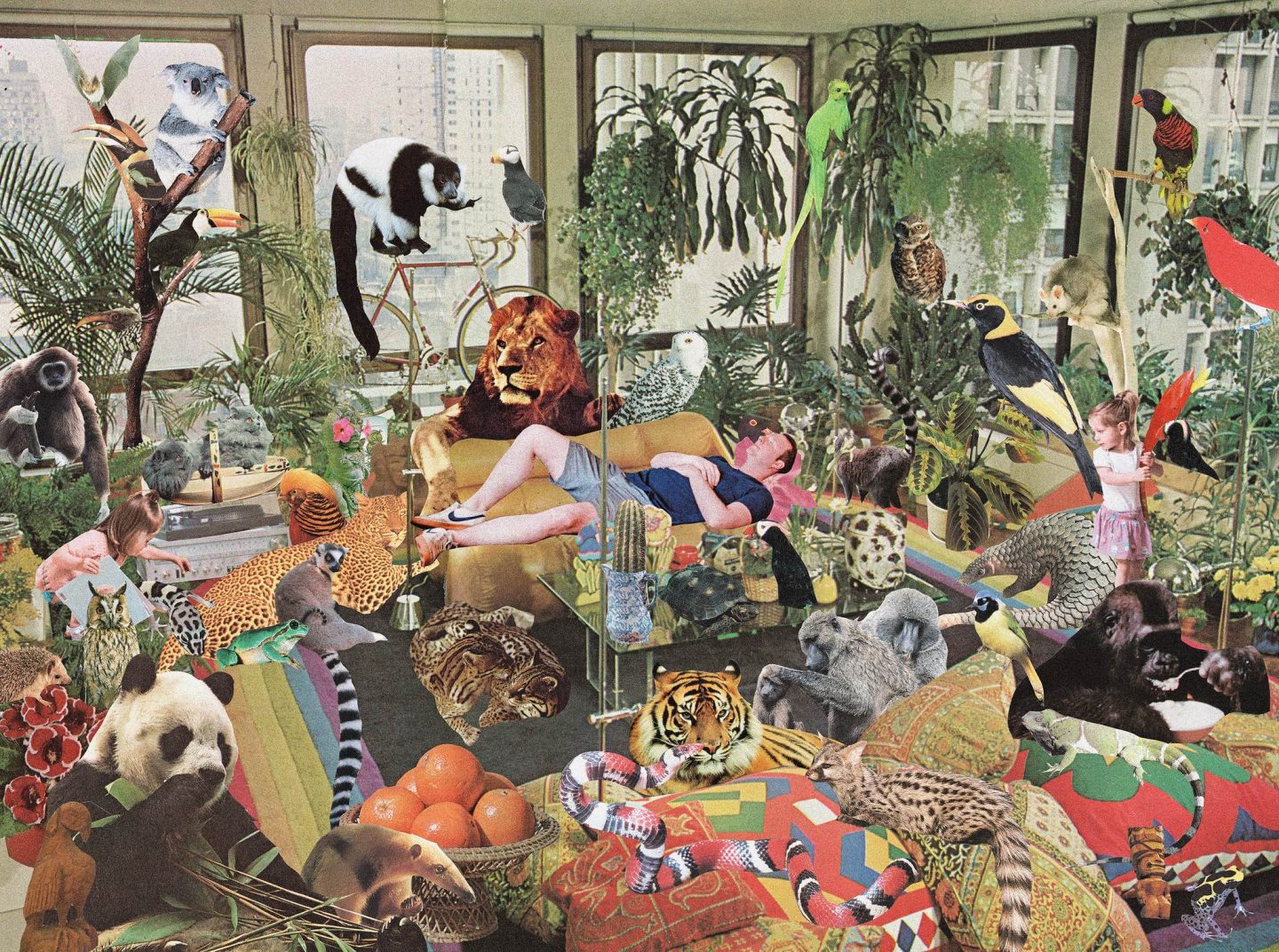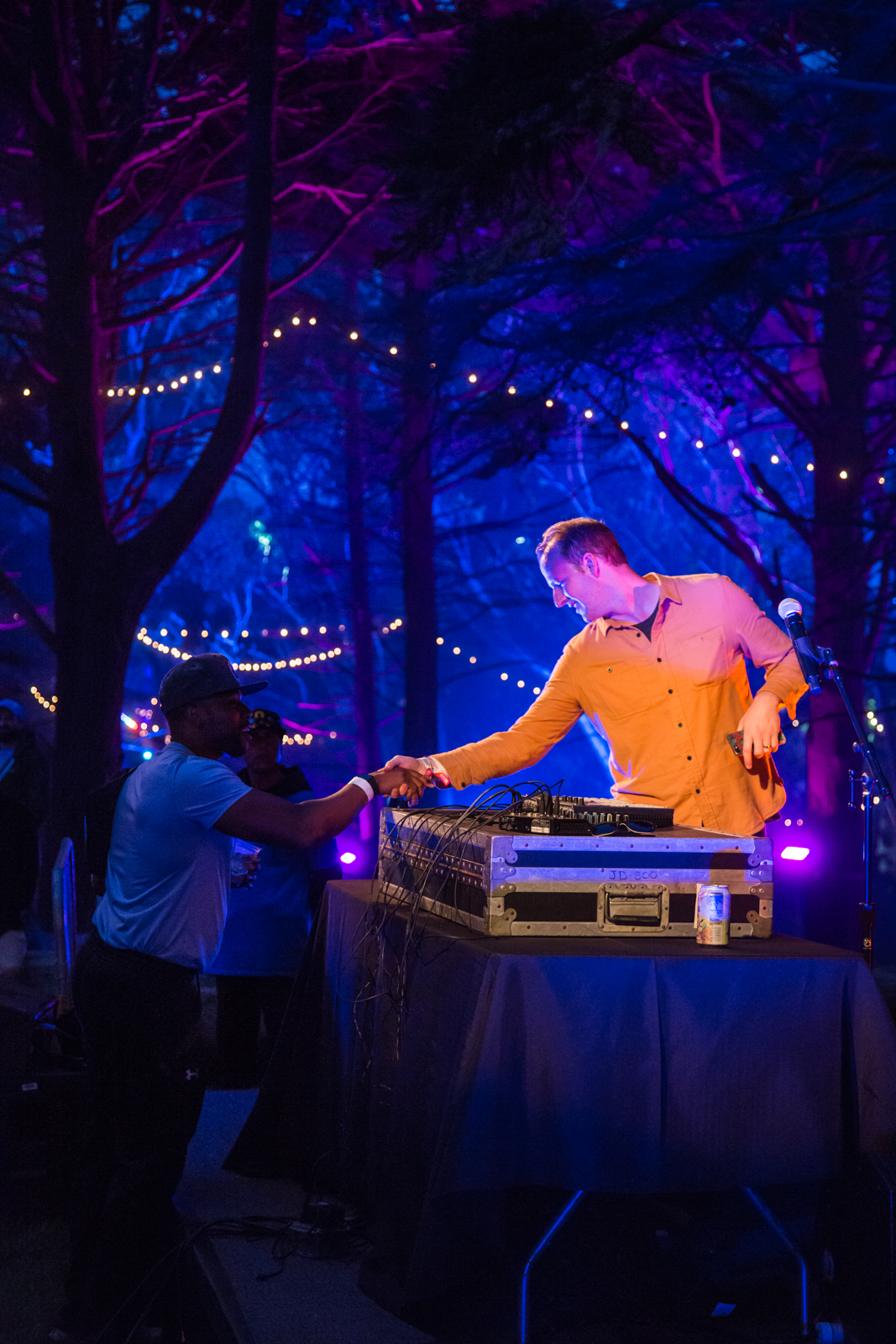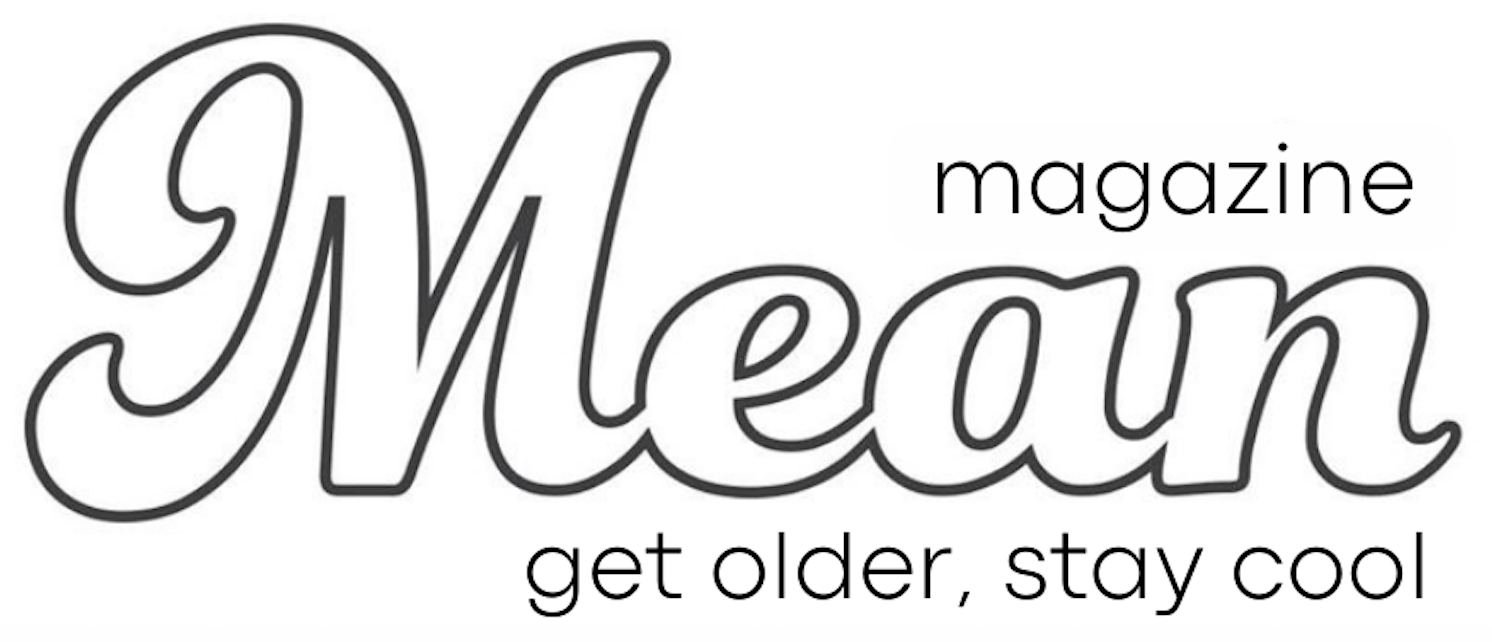Last Updated on October 7, 2019 by Kristen

Photo via Monster Rally
Ted Feighan’s journey began in the most unlikely of places: a Cleveland screamo band. The group found early success, signed a record deal, and toured. But he hated it, and instead found escape in creating sampled jungles of nostalgic lounge music.
That led to his current project, Monster Rally, an underground sound known by those in the know as hip-hop-influenced exotica. It couldn’t have less in common with screamo if it tried.
Now an established musician, collage artist, father of twin girls, and art studio co-owner with his wife, Feighan has returned to Cleveland after eight years in Los Angeles to find space for the things he loves most: family, creating and performing.
Back in Ohio, he buys more dollar-bin vinyl than he has time to listen to, fields emails from rappers who want to collaborate, and journeys to far away places (real or fantasy), all within earshot of his record player. He sat down with me at Outside Lands Music Festival in San Francisco, California to explain how it all came to be.

Photo by Anna-Alexia Basile
Your music is so exotic and lush. But you’re from Cleveland, which is about as far from tropical as you can be. How did you find your sound?
“I think that plays into how it came about. For six months out of the year, it’s below 30 out there. It’s cold and it’s grey. I had always been into music, and said early on, ‘I want to be a touring musician, that’s what I want to do with my life.’ I decided not to go to college, and instead focused on my screamo band Driver Side Impact. We got a record deal with Victory Records right out of high school, the same label as Thursday and Taking Back Sunday. It was a dream come true. We recorded an album, and we toured, and I realized that I just hated it so much.
[perfectpullquote align=”full” bordertop=”false” cite=”” link=”” color=”#F4A625″ class=”” size=”32″]I realized that I just hated it so much.[/perfectpullquote]I left the band, and went back to school in Cleveland when I was 20. I was a little lost and had developed some bad anxiety, and was really just looking for something to make me feel better. My relationship with music had become so negative from my experience with the band, but I had been buying all these records. I would buy ones that I knew nothing about, but would be drawn in by their album covers. That’s how I found the exotica stuff. They were a way to escape the grey and the anxiety and the stress. I could just dive into these places and landscapes on the tropical records, and be somewhere different. ”
Have you travelled at all to the places your sound is coming from? Have you been to Hawaii or the tropics?
“This last album was actually the first one I even made in Cleveland. I was worried, like, will it be bad? I feel that in moving from L.A. back to Cleveland my music is less accepted there. I have less of an audience.
I have done some traveling for samples. I’ve been to India, Peru, Argentina, and I recently went to Hawaii. It was hugely inspiring.
But it’s not so much about being in these places, it’s more about the fantasized idea of them. Even places that aren’t real. These days, everywhere has been discovered and people know about it. But what’s cool about these exotica records is that, when they first came out, this was how people learned about Hawaii and Polynesia. There was a mystique to them. They make you think about what a place might be, and that’s where the music takes you.”
[perfectpullquote align=”full” bordertop=”false” cite=”” link=”” color=”#F4A625″ class=”” size=”32″]I was worried, like, will it be bad?[/perfectpullquote]Do you pick up your records travelling? Or is there a record goldmine somewhere in Cleveland?
“I’ve actually had a really hard time finding records in Cleveland. Los Angeles was amazing. I have a rule where I try to only spend a dollar or two, unless something is just too good to pass up. I could just comb through the dollar bins at Amoeba Records in L.A. in the World Music section and make a whole album.

Monster Rally art print
Cleveland has been tough to find the kind of albums I’m looking for. My wife and I went to Florida specifically to find more exotica. I bought three hundred dollars worth of records and flew home with them! There are all these retirement communities and people are getting rid of their records and it was a goldmine. I’ve probably only had time to listen to 30% of them.
You can always tell the era a record was made just from the printing quality. If it’s offset print and the cover is thick it’s probably a higher end thing from the 60’s and 70’s and it’s probably really loungey.
[perfectpullquote align=”full” bordertop=”false” cite=”” link=”” color=”#F4A625″ class=”” size=”32″]There are all these retirement communities and people are getting rid of their records and it was a goldmine.[/perfectpullquote]I love finding ones in different languages. I bought one recently that I think is in Korean. It’s got a girl on the cover dressed as a go-go dancer with all sorts of colors and it just looked like it was sort of American inspired Korean music. Which is sometimes my favorite, they have all sorts of crazy drums and sound recordings. It’s just such a different feel and the texture of the sound is so unique.
Cover art pulls me in, and it’s all in the dollar bin. I just bought another one with a guy in a full white suit and hat lying down with all these really early 70’s photoshopped orchids around him. You see it and you’re just like ‘you…I’ll take you.’
When you’re feeling trapped or in a rut, what helps you turn the creative corner with your work?
“Sometimes I need to just leave to find records. With this last album, I wasn’t finding anything inspiring. When I left and came back with a bunch of records, I finally felt like I could make something happen again.
After I moved to Cleveland and had my twin girls, I felt this creative struggle. I’m thinking ‘I made this mistake, I moved back to Cleveland, this stinks.’ When you change everything in your life it takes time to find your tools and bearings again. But I bounced back and found inspiration. I’ve made most of my new music while my girls were napping, whereas I used to make all of my music at night. I’ve really just leveled out now and I’m super happy there.”

Photo by Anna-Alexia Basile
So you and your wife run a design studio in Cleveland, what are you guys working on right now?
“It’s called Valley Cruise Press and we’re a design and art lifestyle brand. We focus on artist collaboration, and actually started off making zines and artbooks with friends. We got in early on the patch trend, and that really helped us take off. We work a lot with small artist producing pins, patches, and stationary for them.”
When you make a new record, do you have a feel in mind? Or is it just directly inspired by the vinyls you find?
“Sometimes I have a concept of how I want a record to go from start to finish. I’ll have a genre or region in mind, and then shop for a bunch of records related to that. And as I go through the records, their sound starts to drive the whole album.
I just finished my new record, but probably had enough material for three albums. That’s one of the hardest things, cutting the music. I have to trim it down to what carries the narrative. The new album is about someone waking up on an island with amnesia. They’re trying to figure out how they got there, and it’s all done in the setting of this abandoned lounge. And that’s all drawn from the music on the vinyls I’m sampling. They inspire this loungy vision, and I try to fill the rest in.”

Photo by Anna-Alexia Basile
So you layer all these samples to create an audio landscape, but you also work with art collages. Do you feel like they inform each other?
“I think they do. I’m working on both of them at the same time, and I’m keeping the same mindset. The art work came out the necessity from the music. I needed album artwork and I needed a place for the music to live. So I started making the art. It’s all about searching and discovering and repurposing. I dig in and find things that I like and try to give them new life.
It’s fun because you find the collage material in so many different places. I had this tiger I used in a piece recently that I found in a nature book, but the tiger wasn’t even in the book. Someone had left a note in the book in the 70’s and the note had the tiger on it and I just loved it so I cut it out and used it. It’s crazy because I don’t know who that person is but forty years ago they put that in there and now I can use it.”
I like that when people listen to my stuff, they don’t even realize they’re listening to instrumental hip-hop.
[perfectpullquote align=”full” bordertop=”false” cite=”” link=”” color=”#F4A625″ class=”” size=”32″]I’ve made most of my new music while my girls were napping.[/perfectpullquote]That nostalgic, authentic vinyl texture is really evident in your music, even off Spotify.
Yeah, you know it’s funny. I was actually reading some YouTube comments on my album, which is actually a horrible thing to do. People are mostly ok, but there was one person who was like ‘they need to take this vinyl filter off the record, it sounds terrible, I can’t even listen to one song.’ And I’m sitting there like, ‘there’s no vinyl filter, what you’re hearing is real record.’ I can take those kinds of criticisms.”
So while maybe the subject matter of your songs aren’t, the hip-hop influence is so apparent. Have you ever worked with someone rapping over one of your instrumentals?
“I did one collaboration with a guy from Oakland named Jay Stone, the record is on Spotify and it came out in 2015. But that’s the only one I’ve done. I actually get hit up about it alot, but I’m so cautious about who I choose to put on the records because I’m afraid of the instrumental taking on a different vibe than what I envisioned.
When I found Jay Stone in 2015, it just seemed like a perfect fit. I really liked his stuff, and I’m really happy with how the record came out. I haven’t done anything since, but I’ve been thinking about it. The whole sampling thing really came from a hip-hop influence. I like that when people listen to my stuff, they don’t even realize they’re listening to instrumental hip-hop.
It’s cool how two people can sample the same song, but it will sound totally different. I love Madlib. Madlib is my number one person. Like, when I started the whole project, I said to myself ‘I want to be tropical Madlib.’ So I literally went out and bought the sampler I read Madlib used. He’s a huge influence.”
Monster Rally tours frequently, his music can be found on Spotify, and check out his family-run design studio Valley Cruise Press.
